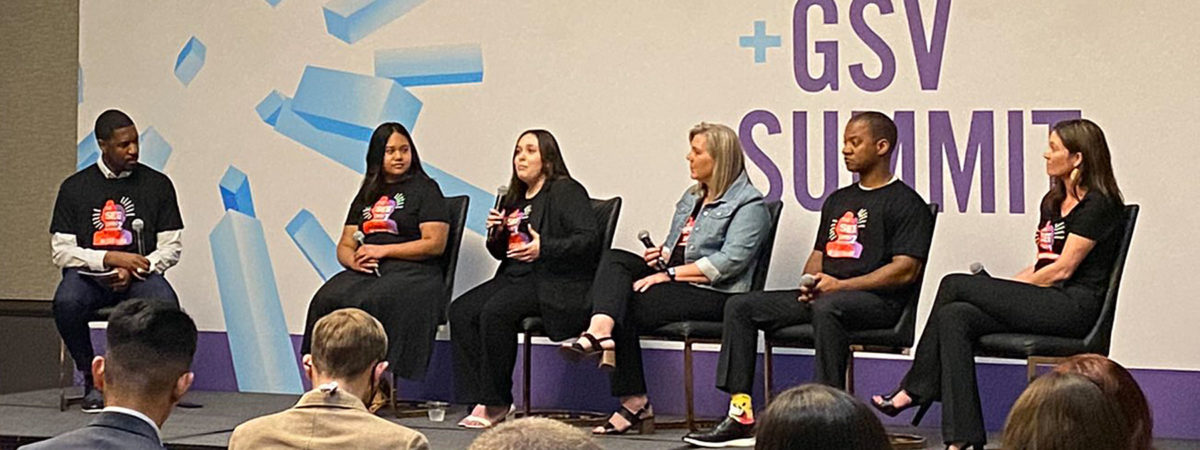
May 3, 2022 | By Digital Promise
As we’ve attended in recent years, we have noticed the growth in centering educator and student voice at the Summit. This year alone, about 500 educators, students, and school leaders were in attendance, and Digital Promise proudly played a vital role in furthering that growth. Our organization led multiple sessions and joined the main stage to elevate the role powerful learning and new technologies can play in accelerating innovative solutions, particularly when centering practitioner and student voice and perspective.
As Jim Steyer, founder and CEO of Common Sense Media, pointed out on our Stage X panel on the digital divide along with Digital Promise’s President and CEO Jean-Claude Brizard, FCC Chairwoman Jessica Rosenworcel, and Evan Marwell, founder and CEO of EducationSuperHighway, “This is an edtech conference, not a tech conference. You’re all creating some of the most important edtech tools ever but we also all need to be child advocates.” The ultimate goal of all digital technologies and innovations must be for the purposes of improving student outcomes.
This can only be achieved by centering and leading with the voices and perspectives of the students and communities we hope to impact. The experience of every student matters, but are we listening? What will we do with what we hear from students? With more educators and students represented at the Summit, we saw student perspectives elevated in the discussions, with students themselves speaking on panels, including our very own panel on “Centering and Amplifying Student Voice and Choice.” As Isabel Ortega, junior at the University of California, Los Angeles and former SEE Summit student leader, said, “It was important to me to make sure our stories were told in these spaces. The power that we hold as students and as a community moving forward [is] important so that the future looks different, is student led, and is for the students.”
With so many leading minds and experts who gathered over the course of the Summit, there is so much potential to collaborate to design innovations that truly provide learners with equal access to opportunities for success—if only we harness the power correctly. Professor Richard Elmore of the Harvard Graduate School of Education is often quoted as saying that the interaction that matters most in education is the interaction between teacher, student, and a set of instructional materials. Jean-Claude Brizard expands on that thought by reminding us, “In that interaction, I often think of the role of technology, of machines, in enhancing this relationship. That should be the role of edtech: how we bring together an ecosystem of players—technologists, educators, researchers, funders/investors—in facilitating this work, ensuring that machines and their designers continue to learn, researchers and educators continue to inform the process, and students ultimately continue to learn more. This is our collective work.”
As we continue on in the school year and anticipate joining next year’s ASU+GSV Summit, we remain committed to positioning our collective power to influence the latest digital technologies and innovations to benefit each learner.
By Pati Ruiz and Yenda Prado